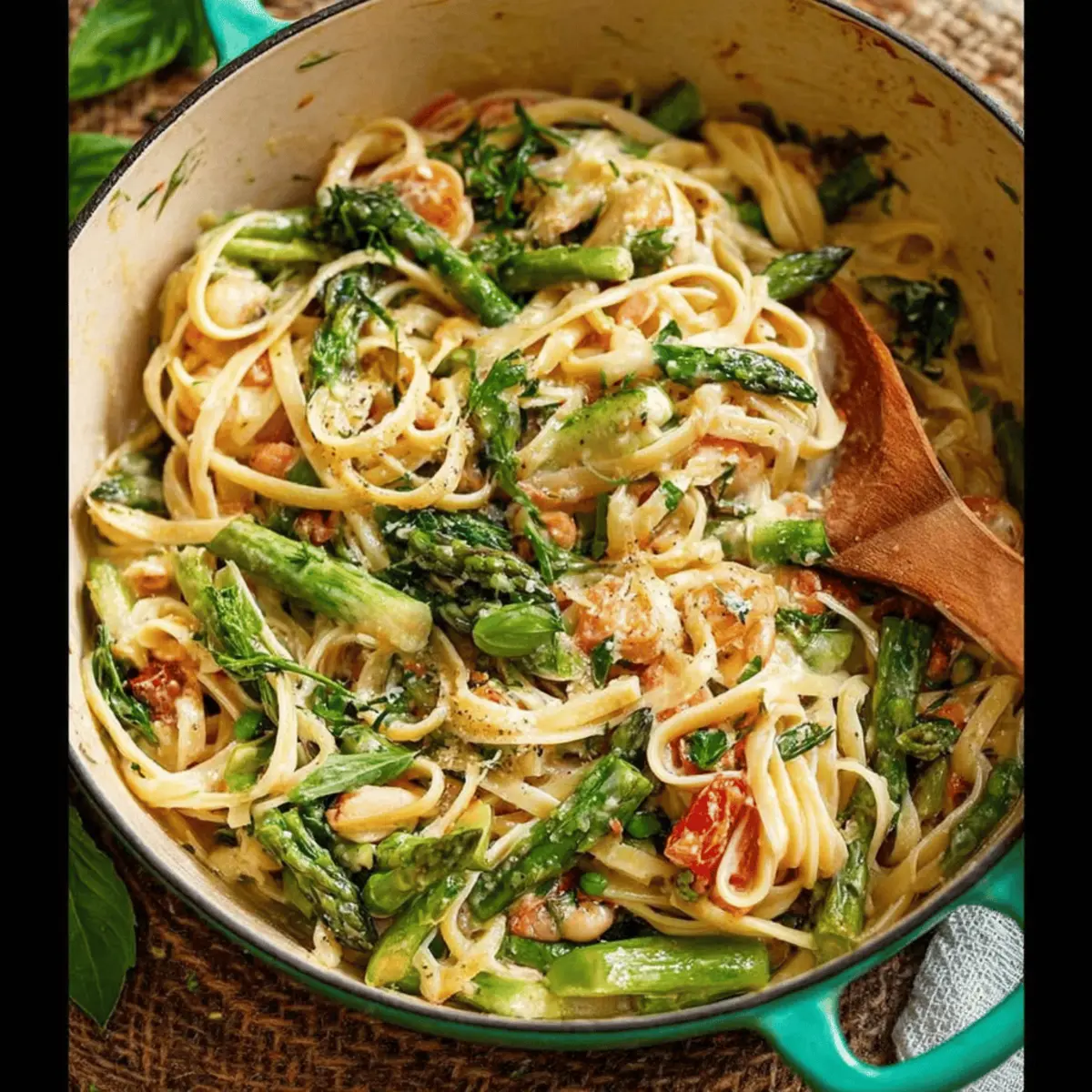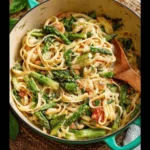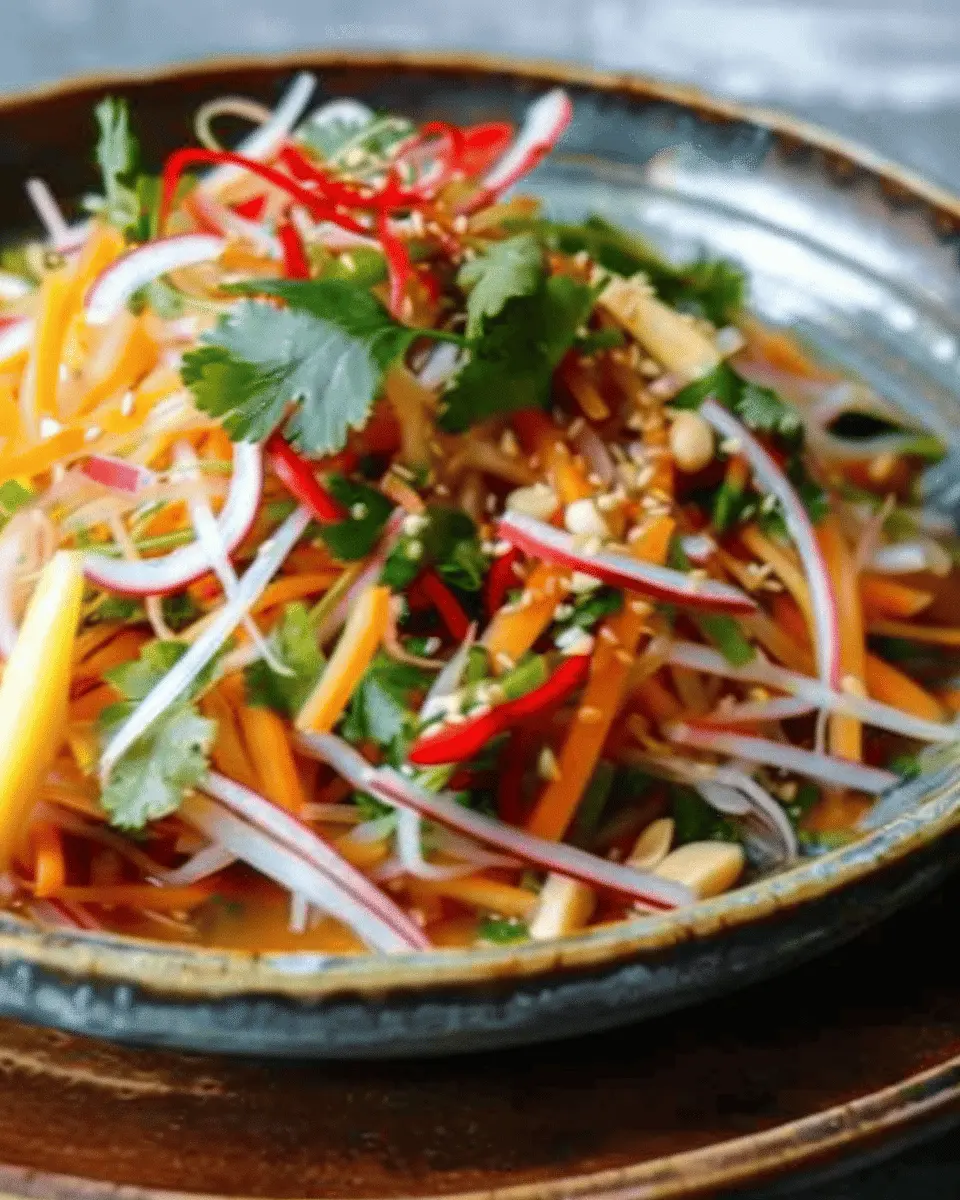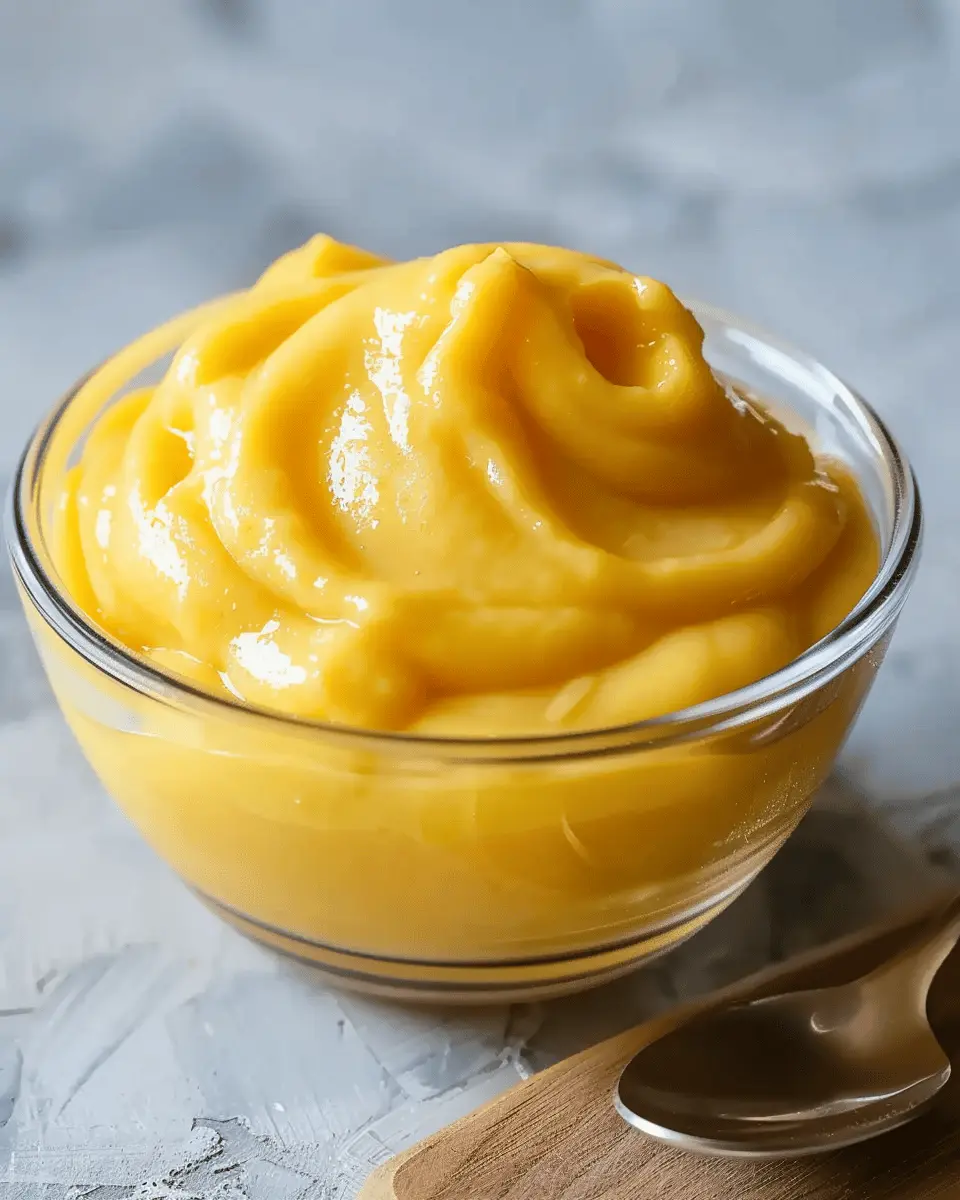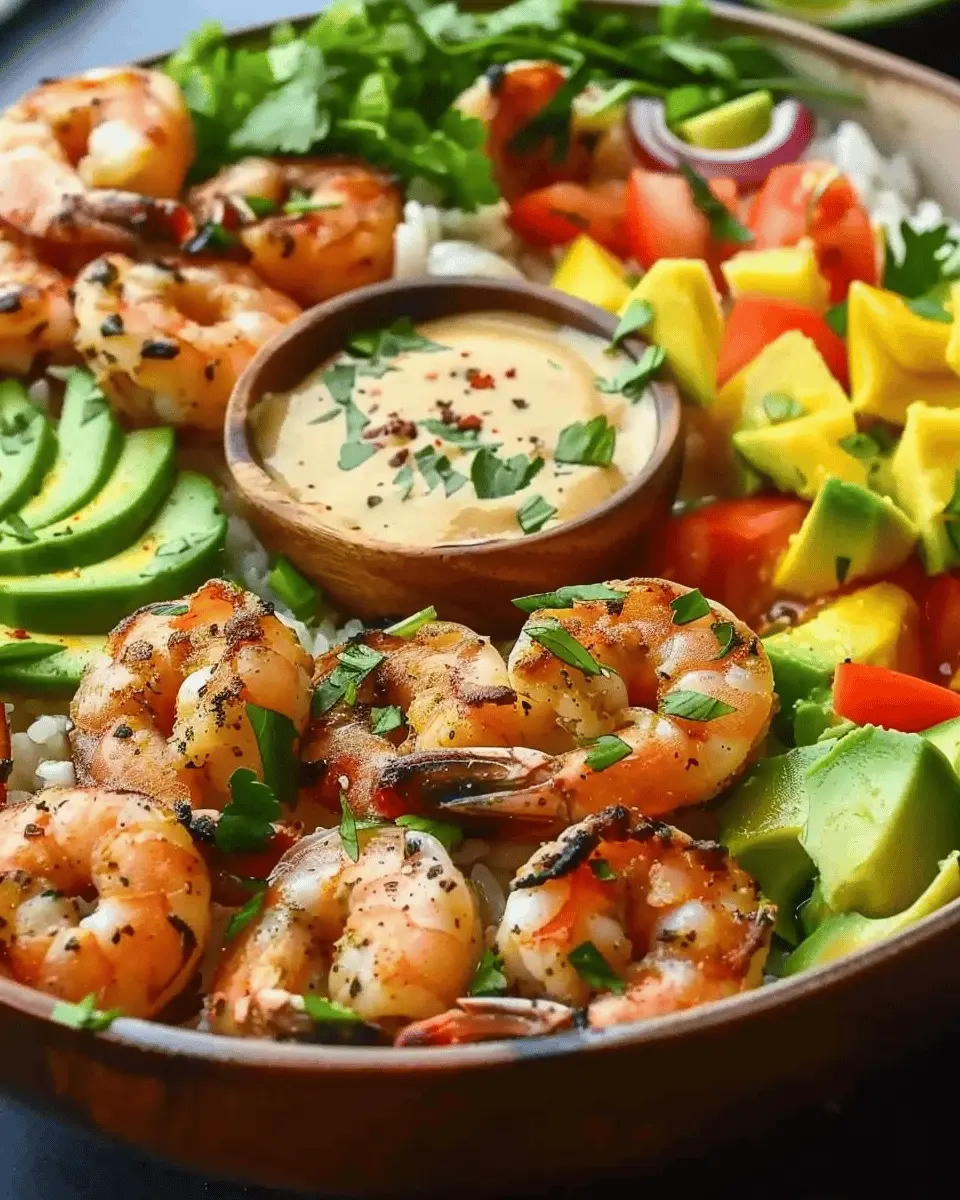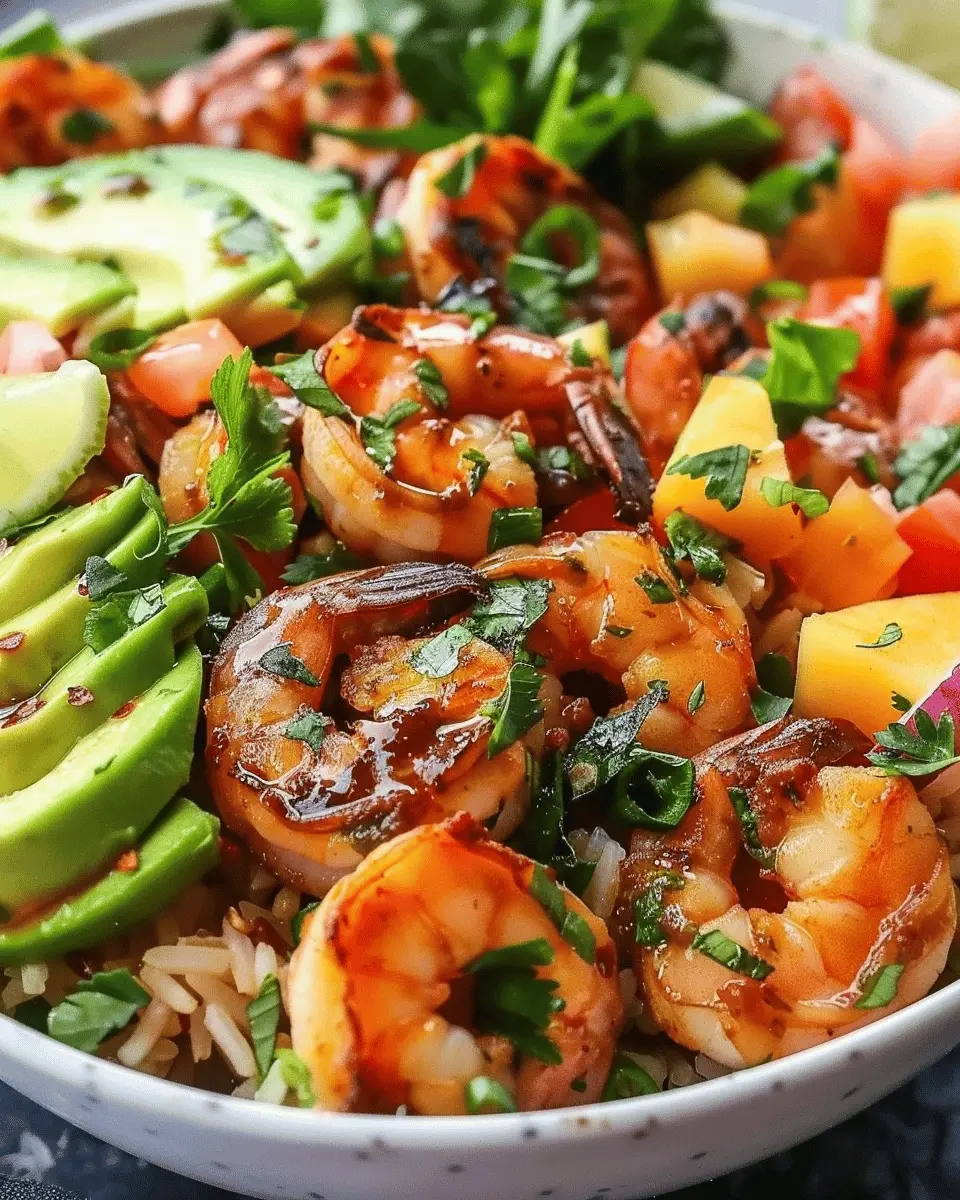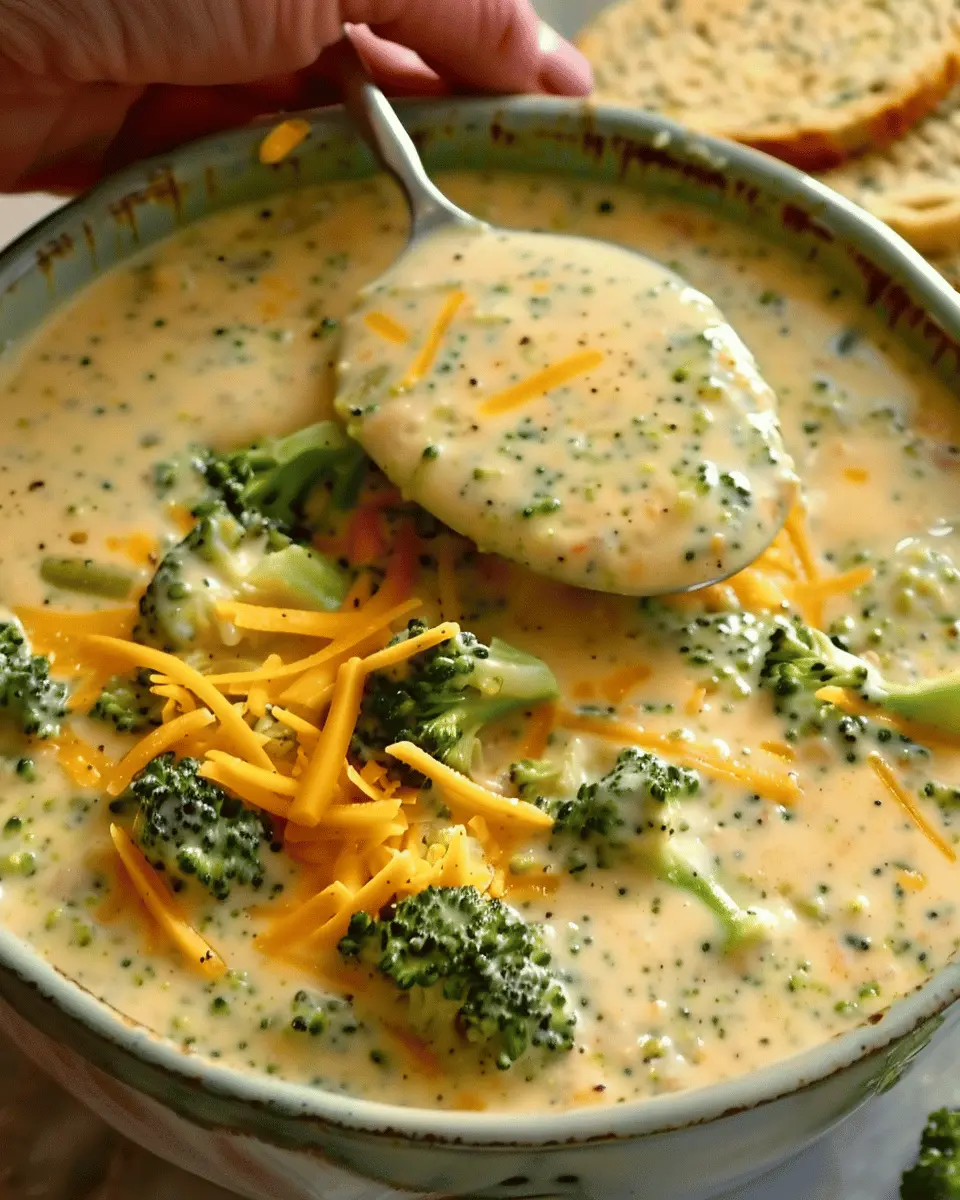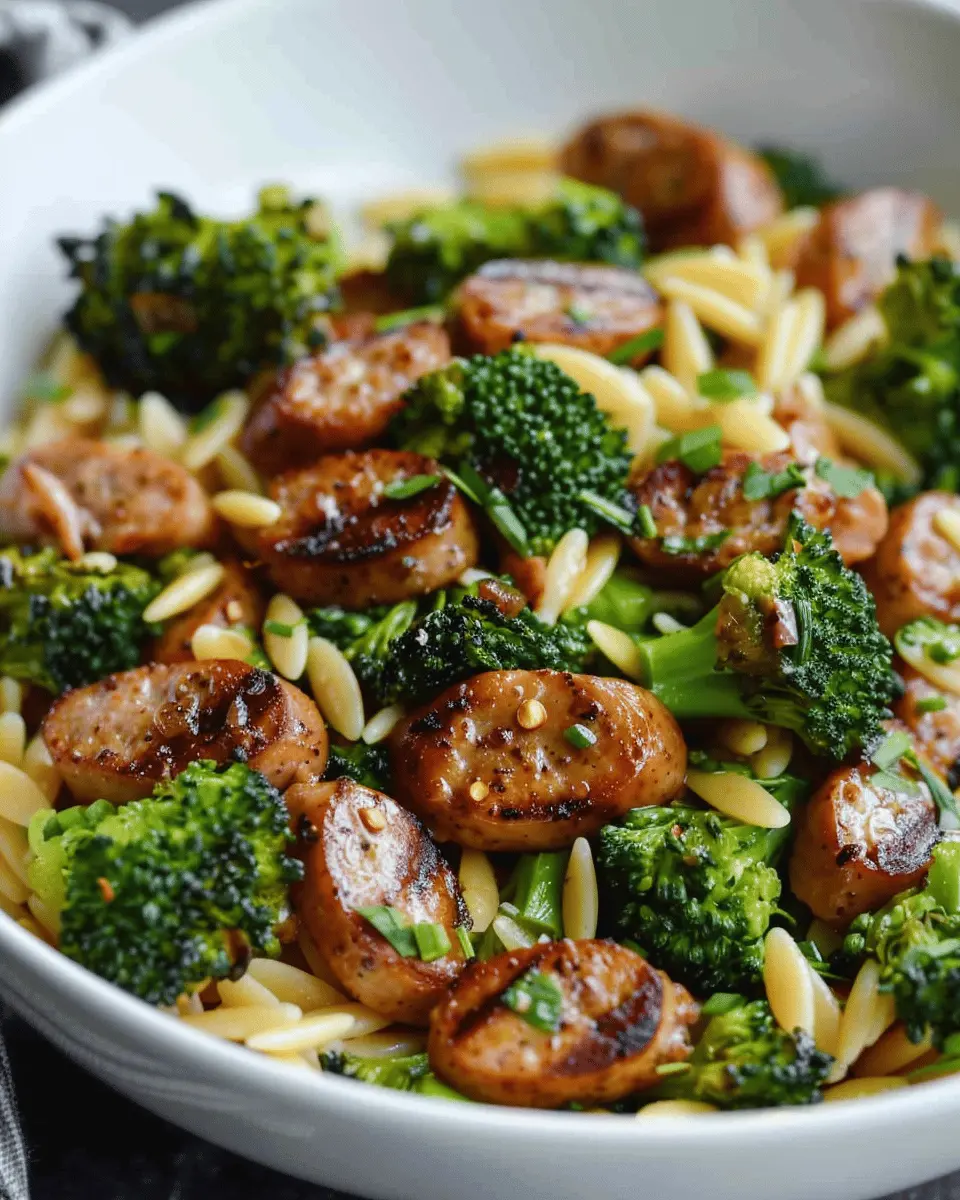Introduction to Pasta Primavera
When I think of pasta primavera, I’m reminded of sun-drenched gardens bursting with vibrant vegetables and the simple joy of a home-cooked meal shared with friends. My love for this dish wasn’t born in a fancy restaurant or during a gourmet cooking class, but rather in my own kitchen, experimenting with whatever fresh produce I had on hand.
What Inspired My Love for Pasta Primavera?
Growing up, my family had a tradition of celebrating spring with a vegetable garden. Each year, we’d sow seeds and later, we’d reap a colorful bounty. As we gathered around the dinner table, my mom often tossed together our garden’s harvest with pasta, olive oil, and herbs, creating a light and refreshing meal. This wholesome dish not only allowed us to enjoy the fruits (or rather, vegetables) of our labor, but it also instilled in me a deep appreciation for seasonal cooking.
Years later, while I was living in a bustling city, I found myself craving the comforting taste of my childhood. On a whim, I Googled for pasta primavera recipes, reading about its origins traced back to Italian cuisine and how it’s celebrated for its flexibility and creativity. You see, pasta primavera isn’t just about the ingredients; it’s a celebration of what’s available, making it a perfect dish for young professionals who often juggle busy schedules and crave healthy yet quick meal options.
Creating pasta primavera is a fantastic way to experiment with flavors! Here are a few ideas to make it your own:
- Veggies: Think bell peppers, zucchini, peas, or cherry tomatoes.
- Pasta: While traditional choices include spaghetti or fettuccine, don’t shy away from using whole grain or gluten-free options.
- Extras: Consider adding protein like chicken, shrimp, or chickpeas for a more filling meal.
If you’re keen to dive deeper into healthy cooking, the USDA offers a wealth of information on seasonal vegetables and their health benefits.
So why not embrace this fresh, colorful dish that celebrates flavors and fosters creativity? Let’s bring a taste of spring into our kitchens year-round with a delightful pasta primavera!
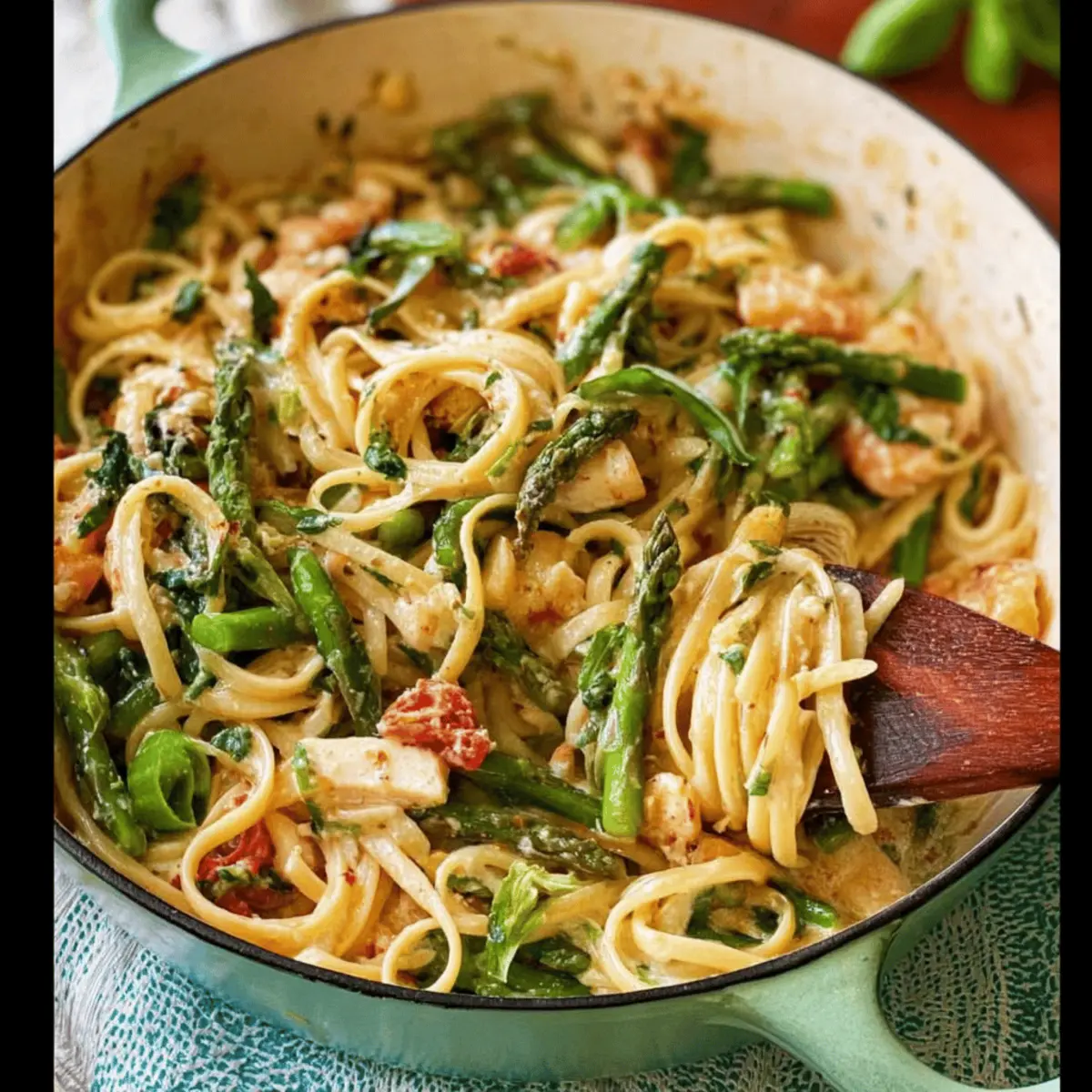
Ingredients for Pasta Primavera
Crafting a delightful Pasta Primavera is all about bringing fresh flavors together. Let’s delve into what you’ll need for this vibrant dish.
Fresh Vegetables to Include
The beauty of Pasta Primavera lies in its versatility. You’ll want to choose a mix of seasonal vegetables to keep things interesting. Here are some great options:
- Bell peppers (red, yellow, or green)
- Zucchini or yellow squash
- Fresh asparagus
- Cherry tomatoes
- Broccoli florets
- Carrots
Try to select organic veggies when possible to elevate the flavor and nutrients. For more ideas on seasonal produce, check out Local Harvest.
Essential Pantry Staples
To make your Pasta Primavera shine, you’ll need a few key pantry items:
- Olive oil
- Garlic
- Salt and pepper
- Pasta (your choice, but spaghetti or penne works best)
These staples provide a savory base that enhances the freshness of your veggies.
Optional Add-ins for Extra Flavor
Want to take your dish up a notch? Here are some optional ingredients that can contribute added depth:
- Fresh herbs like basil or parsley
- Grated Parmesan cheese
- A splash of lemon juice
- Crushed red pepper flakes for heat
Incorporating these elements can truly make your Pasta Primavera a standout dish! Enjoy experimenting with what you have on hand, and remember, cooking is all about creativity.
Preparing Pasta Primavera
Cooking Pasta Primavera can be a delightful experience that combines the vibrant flavors of fresh vegetables with your favorite pasta. Whether you’re looking for a quick weeknight dinner or a colorful dish to impress friends, this guide will walk you through the process step by step. Let’s dive in!
Gather and prep your ingredients
Before you start cooking, it’s crucial to gather and prep your ingredients. A well-organized kitchen can make the cooking process much smoother and more enjoyable. Here’s what you’ll need for a classic Pasta Primavera:
- Pasta: Choose your favorite type; spaghetti, penne, or fettuccine work wonderfully.
- Fresh vegetables: Bell peppers, zucchini, cherry tomatoes, and broccoli are excellent choices. Grab a mix of colors for visual appeal.
- Garlic: Fresh garlic adds an irresistible aroma and flavor.
- Olive oil: For sautéing and drizzling.
- Herbs: Fresh basil or parsley can elevate the dish’s freshness.
- Parmesan cheese (optional): Grated, for topping the finished dish.
Don’t forget to wash and chop your vegetables into bite-sized pieces. This not only helps with even cooking but also makes for a more pleasant eating experience.
Cook the pasta to al dente
Now that your ingredients are prepped, it’s time to cook the pasta. This is a critical step in achieving the perfect texture—a key element in a successful Pasta Primavera. Follow these simple steps:
- Boil water: Fill a large pot with salted water and bring it to a rolling boil.
- Cook your pasta: Add the pasta and cook according to the package instructions, usually about 8-10 minutes for most shapes.
- Test for al dente: To achieve that perfect bite, sample a piece a minute or so before the time indicated on the package. It should be firm yet cooked through.
Once cooked, drain the pasta but remember to reserve a cup of the pasta water. This starchy liquid can be a game-changer when combining your pasta with the sauce later on.
Sauté the vegetables to perfection
While your pasta is cooking, you can focus on the veggies. Sautéing them brings out their natural sweetness and creates a delightful flavor. Here’s how to do it:
- Heat olive oil: In a large skillet, heat a couple of tablespoons of olive oil over medium heat.
- Add garlic: Once the oil is shimmering, add minced garlic and sauté for about 30 seconds until fragrant—be careful not to burn it!
- Incorporate vegetables: Toss in your prepped veggies starting with the harder ones like broccoli and bell peppers, and follow with softer vegetables like zucchini and cherry tomatoes. Cook for about 5-7 minutes until they’re tender but still vibrant.
Remember, cooking times may vary based on the size of your veggie pieces, so keep an eye out. If you’re keen on learning more about cooking techniques, check out this comprehensive cooking guide.
Combine pasta and vegetables
Once your veggies are beautifully sautéed, it’s time to bring everything together. Gently fold the drained pasta into the skillet with the vegetables. Here’s where that reserved pasta water comes into play—you can add a splash or two to help create a cohesive sauce. This addition not only enhances the flavor but adds a silky texture.
- Mix well: Stir everything together so the pasta is well-coated in the vegetable goodness.
Toss with sauce and serve
Finally, let’s add a little flair to your Pasta Primavera. You can opt for a light sauce made from olive oil and lemon juice for a refreshing lift, or use store-bought marinara for a quicker approach. Here’s a simple recipe:
- Zest and juice a lemon: This brightens the whole dish.
- Mix in fresh herbs: Add chopped basil or parsley for that final touch.
- Top with cheese: If you’re a cheese lover, grated Parmesan makes a delicious finishing touch.
Serve your Pasta Primavera warm, maybe with a side salad and some crusty bread for a well-rounded meal. Enjoy your culinary creation—it’s all about celebrating the simplicity and freshness of flavors!
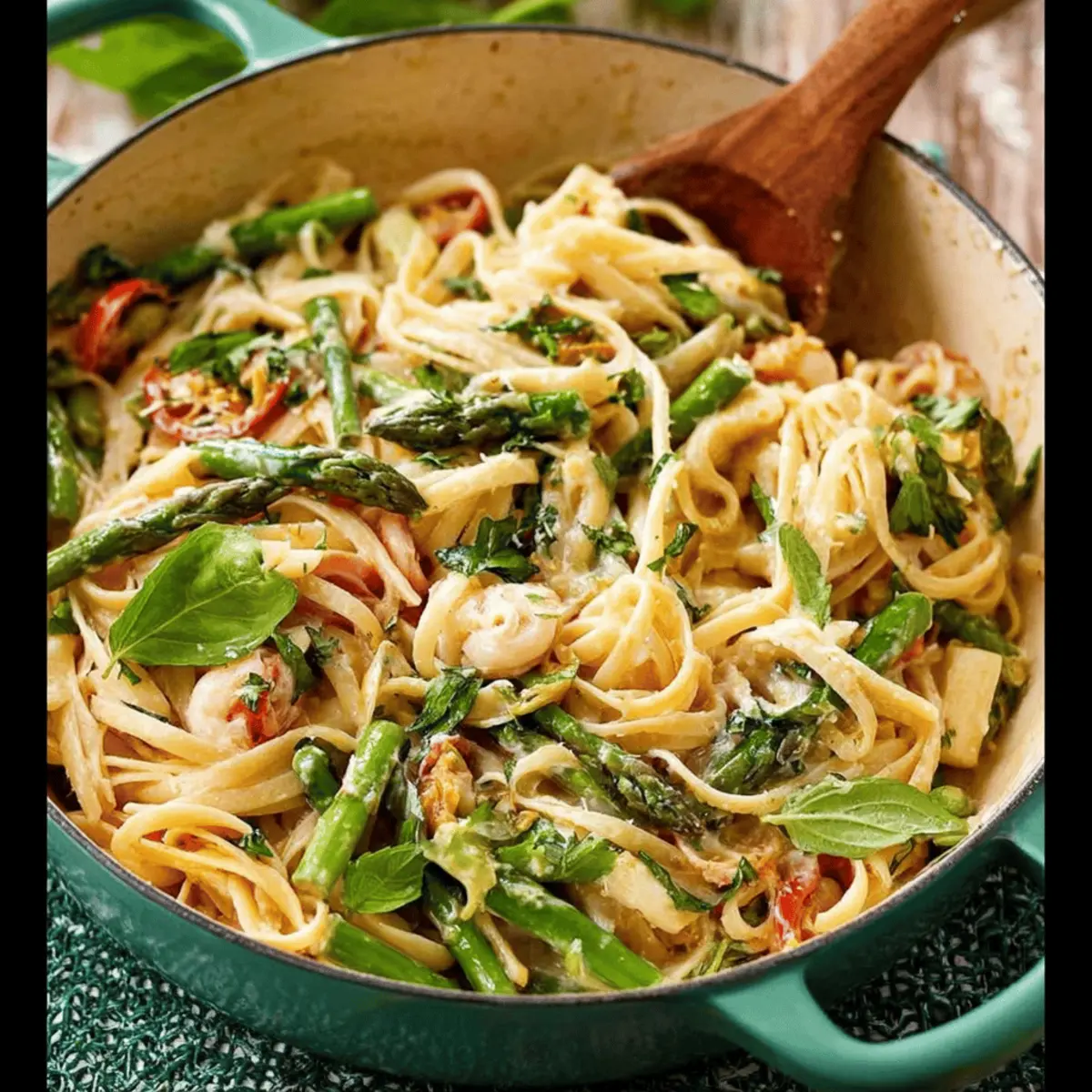
Variations on Pasta Primavera
Pasta primavera is one of those versatile dishes that can dance between many styles and flavors. Whether you’re in the mood for something classic or a bit more creative, there’s a variation to delight your taste buds. Let’s explore some exciting takes on this beloved dish.
Classic Pasta Primavera
Let’s start with the timeless version: classic pasta primavera. This dish is all about fresh, seasonal vegetables like bell peppers, zucchini, carrots, and cherry tomatoes.
To prepare it:
- Sauté your veggies in olive oil until they’re vibrant and tender.
- Toss them with al dente pasta (spaghetti or penne works great).
- Finish with a drizzle of garlic-infused olive oil and a sprinkle of parmesan cheese for that extra touch.
Curious to know the origin? This dish was popularized in the 1970s in New York but has roots in Italian cuisine. If you’re keen to dive deeper into its history, check out Food52 for insightful articles.
Creamy Alfredo-style Pasta Primavera
If you’re looking to indulge, why not try a creamy Alfredo-style pasta primavera?
- Start with your favorite vegetables, then make a rich sauce by combining heavy cream, butter, and parmesan.
- Stir in cooked pasta until it’s all harmoniously blended.
- For an herbaceous touch, add fresh basil or parsley just before serving.
This variation is comforting and satisfying, perfect for those days when you need a little extra warmth.
Vegan Pasta Primavera
For the plant-based eaters, vegan pasta primavera is just as enticing!
- Swap out traditional ingredients for plant-based alternatives: think cashew cream instead of dairy and nutritional yeast instead of parmesan.
- Use colorful veggies as your base and add in protein like chickpeas or lentils for an extra nutrient boost.
Adding a splash of lemon juice elevates the freshness while keeping it delightful. If you’re looking for more vegan recipes, visit the Minimalist Baker for more inspiration.
In summary, no matter which variation of pasta primavera you choose, you’re in for a delicious experience that celebrates the beauty of fresh ingredients!
Cooking tips for Pasta Primavera
When you’re whipping up a delicious pasta primavera, a few simple tips can elevate your dish!
Choosing the right pasta
The type of pasta you select can make all the difference. Opt for shapes like bow ties, penne, or fettuccine to hold onto the sauce and veggies effectively. You can even go for whole wheat or gluten-free options if you have dietary preferences. Remember, cooking pasta al dente gives it a delightful bite!
Seasoning for maximum flavor
Flavor is key in a pasta primavera. Use a generous amount of salt in your boiling water (think ocean-level salinity) to ensure the pasta is well-seasoned. Fresh herbs like basil and parsley can really bring your dish to life. For an extra touch, consider adding grated Parmesan right before serving. It’s the cherry on top, trust me!
Avoiding soggy veggies
To keep your vegetables crisp and vibrant, sauté them separately before mixing them with the pasta. Cook them for just a few minutes until they’re tender but still colorful. For added crunch, try roasting some veggies like bell peppers and zucchini. Keep an eye on your timing; you want that perfect balance of tenderness without compromising texture!
For more information and tips on cooking pasta, check out the Pasta Institute. Enjoy your culinary adventure!
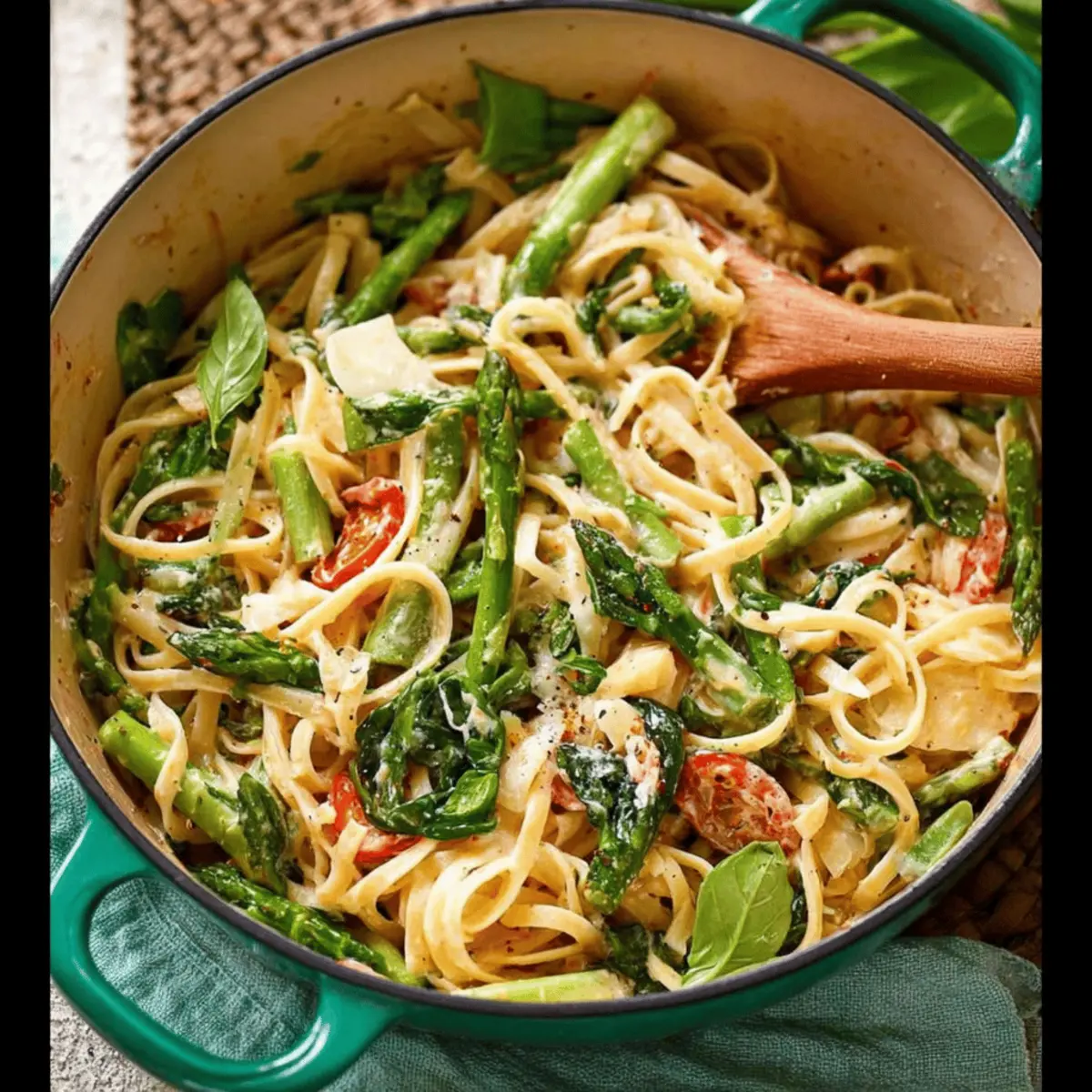
Serving suggestions for Pasta Primavera
Ideal pairings for a complete meal
When it comes to enjoying pasta primavera, the goal is to create a well-rounded dining experience. A light, crisp white wine like Sauvignon Blanc or a refreshing sparkling water can elevate those fresh vegetable flavors. If you’re feeling adventurous, consider pairing it with grilled chicken or shrimp for added protein. These options enhance the dish without overshadowing its vibrant colors and flavors.
Creative presentation ideas
How you present your pasta primavera can turn a simple meal into an exquisite experience. Consider using a large platter to serve, allowing the colors of the vegetables to shine. Add a sprinkle of freshly grated Parmesan and a few basil leaves on top for an elegant touch. You might even use mason jars for individual servings at a gathering—it’s rustic yet chic!
Perfect side dishes to complement
To round out your meal, think about incorporating sides that harmonize with pasta primavera. Some delicious options include:
- Garlic bread: A classic choice, adding a rich, buttery flavor.
- Arugula salad: Tossed with olive oil, lemon juice, and shaved Parmesan for a fresh crunch.
- Roasted vegetables: Enhance the seasonal vibe with a medley of seasonal veggies like asparagus or zucchini.
These sides not only complement your dish but also create a feast for the eyes. For more ideas, check out this guide on pairing sides with pasta for more inspiration.
Time breakdown for Pasta Primavera
Preparation time
Getting started on your Pasta Primavera is quick and straightforward, making it perfect for busy weeknights. Generally, you’ll need about 10-15 minutes to chop the vegetables and gather your ingredients. Save time by selecting pre-chopped veggies from your grocery store, or better yet, try incorporating seasonal fresh produce for an extra burst of flavor.
Cooking time
Once your prep work is done, cooking this delightful pasta takes only 15-20 minutes. Boil the pasta while sautéing your vegetables for a seamless cooking experience. The vibrant colors and aromas will fill your kitchen, making it hard to resist digging in right away!
Total time
In total, you’re looking at approximately 30-35 minutes from start to finish. What’s not to love about a quick, delicious, and colorful meal? If you’re curious about pairing options, consider checking out The Pasta Research Institute for some delightful side dishes! This Pasta Primavera not only saves you time but also brings a sense of joy to your dining experience, making it a winner for any occasion!
Nutritional Facts for Pasta Primavera
When you’re hungry and craving a burst of flavors, Pasta Primavera is not just a delicious choice but a nutritious one too! Let’s break down its nutritional profile to see what makes this dish a go-to for health-conscious diners.
Calories
A typical serving of Pasta Primavera contains about 300-400 calories, making it an excellent option for a balanced meal without overindulging. It packs a flavorful punch without weighing you down, perfect for a busy workweek!
Carbohydrates
You’ll find that Pasta Primavera is rich in carbohydrates, providing approximately 60-70 grams per serving. These carbs come primarily from the pasta and the variety of seasonal vegetables. They offer you the energy you need to power through your day, making it an ideal choice for lunch or dinner.
Fiber
Loaded with fresh vegetables like bell peppers, zucchini, and carrots, a serving of Pasta Primavera provides about 8-10 grams of fiber. Fiber not only helps with digestion but also keeps you feeling full longer. Including fiber in your diet is crucial, and you can learn more about its benefits on Harvard Health.
Pasta Primavera is not only delicious but also a vibrant and nutritious dish that can easily fit into a healthy lifestyle. Exploring fresh, seasonal ingredients can elevate both the flavor and health benefits of this classic meal!
FAQs about Pasta Primavera
Pasta primavera is a delightful dish that celebrates fresh vegetables and seasonal flavors. If you’re diving into this recipe, you might have a few questions. Let’s explore some common FAQs to help you elevate your pasta primavera experience!
What vegetables work best in pasta primavera?
When it comes to vegetables, variety is key! Some of the best choices include:
- Bell peppers: Add a sweet crunch.
- Zucchini: For a tender, mild flavor.
- Cherry tomatoes: Burst with sweetness as they cook.
- Asparagus: Provides a wonderful snap and vibrant color.
- Broccoli or cauliflower: Add texture and nutrition.
Feel free to mix and match based on seasonal availability. For example, check out this seasonal produce guide to see what’s fresh near you!
Can I make pasta primavera ahead of time?
Absolutely! Pasta primavera can be made ahead and stored in the fridge for up to three days. Just remember to undercook the vegetables slightly, as they’ll finish cooking when reheated. Store the pasta and veggies separately to maintain their best texture. When you’re ready to enjoy it again, a quick toss in the pan or microwave will have it tasting fresh!
How can I add protein to my pasta primavera?
Looking to bulk up your dish? Here are a few easy protein options:
- Grilled chicken: For a classic touch.
- Shrimp: Adds a seafood flair—delicious and quick!
- Chickpeas or white beans: For a plant-based option that’s both hearty and filling.
Adding protein not only enhances flavors but also makes your meal more satisfying. So, whether you’re cooking for yourself or entertaining friends, don’t shy away from customizations that truly make your pasta primavera your own!
Conclusion on Pasta Primavera
In summary, pasta primavera is more than just a dish; it’s a celebration of fresh ingredients and vibrant flavors. Making this meal at home allows you to customize it with your favorite vegetables or whatever is in season. Plus, the joy of tossing pasta with a rainbow of colors brings a delightful sense of accomplishment and satisfaction.
As you savor each bite, consider how this simple yet nutritious dish can become a staple in your cooking repertoire. For tips on exploring fresh vegetables, check out this guide from EatFresh.org. So gather your ingredients and embrace the art of crafting your own pasta primavera—you won’t regret it!
PrintPasta Primavera: The Best Way to Enjoy Fresh Spring Flavors
Pasta primavera is a vibrant dish that celebrates the fresh flavors of spring.
- Prep Time: 10 minutes
- Cook Time: 15 minutes
- Total Time: 25 minutes
- Yield: 4 servings 1x
- Category: Pasta
- Method: Stovetop
- Cuisine: Italian
- Diet: Vegetarian
Ingredients
- 8 ounces pasta
- 2 tablespoons olive oil
- 1 clove garlic, minced
- 1 cup bell peppers, sliced
- 1 cup zucchini, sliced
- 1 cup cherry tomatoes, halved
- 1 teaspoon salt
- 1/2 teaspoon black pepper
- 1/4 cup grated Parmesan cheese
Instructions
- Cook the pasta according to the package instructions until al dente.
- In a large skillet, heat the olive oil over medium heat.
- Add minced garlic and sauté for 1 minute.
- Add bell peppers and zucchini, cooking until softened.
- Stir in the cherry tomatoes and cook for an additional 3-4 minutes.
- Toss the cooked pasta with the vegetables.
- Season with salt and black pepper.
- Top with grated Parmesan cheese before serving.
Notes
- Feel free to use any vegetables you have on hand.
- Great with fresh herbs like basil or parsley.
Nutrition
- Serving Size: 1 cup
- Calories: 300
- Sugar: 5g
- Sodium: 400mg
- Fat: 10g
- Saturated Fat: 2g
- Unsaturated Fat: 8g
- Trans Fat: 0g
- Carbohydrates: 45g
- Fiber: 3g
- Protein: 10g
- Cholesterol: 5mg
Keywords: Pasta Primavera

